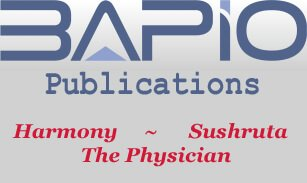FIRMST abstract 2020.44
FIRMST2020-AB44
PARADIGMS OF LIVER TRANSPLANTATION FOR HEPATOCELLULAR CARCINOMA IN THE REPUBLIC OF BELARUS
FIRMST2020-AB44
PARADIGMS OF LIVER TRANSPLANTATION FOR HEPATOCELLULAR CARCINOMA IN THE REPUBLIC OF BELARUS
Denis EFIMOV, Aliaksei SHCHERBA, Sergey KOROTKOV,
and Oleg RUMMO
Minsk Scientific and Practical Center of Surgery, Transplantology and Hematology, Minsk, Belarus
Aim:
To evaluate the effectiveness of the liver transplantation of patients with Hepatocellular carcinoma (HCC) and cirrhosis according to morphological (Milan criteria) and oncological criteria
Keywords: liver transplantation, hepatocellular carcinoma.
correspondence
den.efimoff@gmail.comNo conflict of interest declared
Article InformationDOI:
10.38192/1.6.3.firmst20.ab44Epub: 21.08.2020Presented at FIRMST Conference, Moscow 2020Peer reviewed by JS Bamrah, Ananthakrishnan Raghuraman, Soumit DasguptaOpen Access- Creative Commons Licence CC-BY-ND-4.0
Introduction:
In spite of the number of medical technologies developed in the world for the treatment of HCC, the most acute question at the moment is the selection criteria for such for liver transplantation, the place and time of application of other methods of treatment to achieve optimal long-term results.
Materials:
A retrospective cohort study of patients undergoing liver transplantation from 2008 to 2019 (a total of 690 transplantations, 105 (15%) of recipients with HCC) in the Minsk Scientific and Practical Center for Surgery, Transplantology and Hematology (Minsk, Republic of Belarus) was performed. The patients were divided into 3 groups:
- recipients whose liver transplantation was performed according to the Milan criteria (“Milan”),
- recipients that did not meet neither the Milan criteria nor the University of California in San Francisco (UCSF) criteria (“extra-UCSF”) and
- recipients that did not meet the Milan and UCSF criteria that meet the Barcelona clinic liver cancer (BCLC) staging (BCLC-B) criterion and undergo locoregional therapy (LRT) with subsequent assessment of the radiological and serological response (“Lerut”).
Results:
The highest rate of HCC progression on the waiting list was observed in the extra-UCSF group of patients (36% versus 11% (p = 0.03) and 15% (p = 0.1) in the “Milan” and “Lerut” groups, respectively).
Statistically significant differences were found in the level of cancer-associated mortality and median disease-free survival, with the worst rates in the extra-UCSF group. The one-year, three-year and five-year overall survival rate in the groups were
- 87.5%; 80.1% and 70.3% for the Milan group;
- 78.6%; 62.9% and 62.9% for the extra-UCSF group and
- 96.4%; 86.4% and 78.7% for the Lerut group, respectively.
Conclusion:
The oncological prognosis of patients with HCC is informed not only from the size and number of tumour foci as from the biological characteristics of the tumour. LRT combines both a therapeutic option, that allows reach better survival, and a stratification option, that enable patients to wait for liver transplantation beyond the accepted criteria.
If you are interested in publishing your conference abstracts with us
If you are interested in publishing your conference abstracts with us
Please contac the editorial board for peer review and publication in the The Physician Journal of International Health
SUBMIT A MANUSCRIPT
© 2024
All Rights Reserved | BAPIO Ltd



